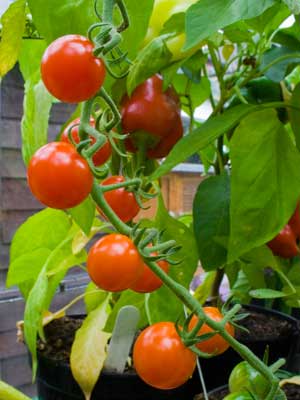
Our grandparents or great grandparents didn’t need to believe what to plant in their landscape, it just made sense to plant something that you simply can eat. With the shift of populations to urban areas, people stopped using edible plants in their landscape and easily visited their local marketplace for produce. The big, perfectly landscaped lawn and hedges became the norm, and in many developments, strict guidelines were developed for what landscaping was “acceptable.”
In the urban setting, the kitchen garden has been relegated to the backyard, out of site. But your edibles don’t got to be confined to only the garden. Edible plants are often used as a part of the landscaping of the yard , also as within the backyard. Watch our video, Organic Edible Landscaping, where Tricia shares her recommendations on creating an edible landscape.
Things to think about When Landscaping with Edibles
Location – If adding a angiospermous tree or vegetable, they’re going to got to be located in a neighborhood that gets 6-8 hours of sun. Adding plants that need shade will got to be positioned to a neighborhood that fills their needs.
Space – Adding a typical size angiospermous tree would require quite little bit of space for the mature tree. Consider fixing dwarf varieties if space is restricted . Some fruit trees are often trained in an espalier shape to suit limited spacing like along a fence. Trees that employment well for espaliers are apple, pear, and figs. For more information on training your espalier, watch our video.
Toxic plants – If young children or pets are getting to be frequent visitors to the landscape, beware that some plants are toxic if eaten. Some common landscape plants that are toxic include oleander leaves, azaleas, rhododendrons, hydrangeas, privet, daphne and laurels. Parts of common edible plants also can be toxic like tomato, potato and rhubarb leaves. Consideration should be taken when using these plants in an edible landscape with young children or pets.
pomegranate for edible landscapes
Anchor the planning
Every landscape should have anchor plants, either edible or ornamental. Some common edible anchor plants are apple, citrus, pear, persimmon, fig, plum, olive, pomegranate, Spice Zee nectaplum, crab apples, or cherry (dwarf variety for limited space). If you would like to combine it up, you’ll use a decorative tree as an anchor. Great choices are maples, crepe myrtles, dogwood, redbud, or ornamental plums.
Edible Plants for Mid-level
Mid-level plants aren’t as big because the anchor plants but bigger than the bottom covers. Good choices for mid-level edible plants are artichokes, rhubarb, blueberries, currants, gooseberries, goji berries, or roses. If you’ve got space for vining plants, consider grapes, hops, kiwi, annual melons or cane berries.
Herbs which will work are rosemary, sage, comfrey, borage, or striking colors of purple basils. There are numerous herbs which will work but consider your location as some herbs will only grow as annuals in cold zones.
freckles lettuce for edible landscapes
Low Growing and Ground Covers
Edible flowers are great additions to the landscape design. Nasturtiums are really pretty plants with striking flowers and are good on salads. Other edible flowers include calendula, carnations, bachelor buttons, chrysanthemums, lavender and other herbs have edible flowers. Here may be a site with an in depth list of edible flowers — there are numerous to settle on from!
Different lettuces, kale and chard are specialized for you and are very beautiful also .
dwarf jewel nasturtium for edible landscapes
Ground covers are good for filling within the empty spaces between plants. Alpine strawberries, or regular strawberries are good at spreading and are yummy to eat. wild thyme are often used or prostrate rosemary which is sweet for hanging over rock walls or raised beds.
Try working some edible plants into your landscaping. they’re going to add such a lot beauty and you’ll eat them also . That’s a plus in my mind!

